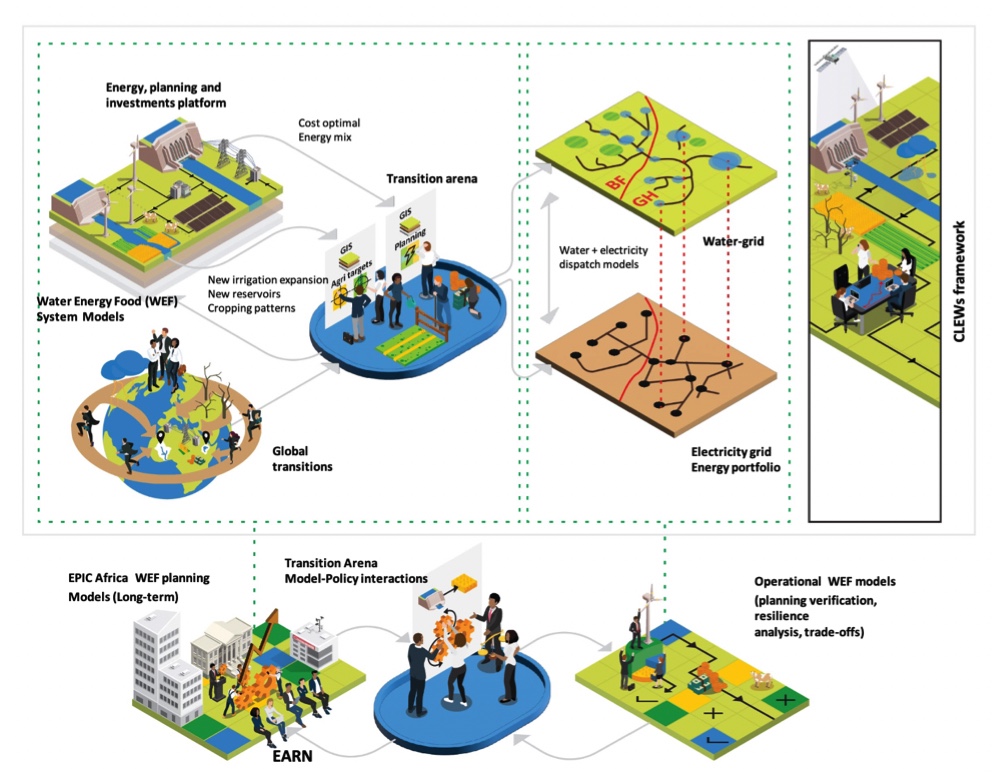CLEWS Observatory
Integrated Climate Land-use Energy and Water Systems.
EPIC Africa CLEWs Framework for Long-term Planning and Operational Assessment of WEF Systems in an African basin/country. The picture depicts how Long-term energy investment planning is coupled with agricultural and water infrastructure decisions, and driven by operationalizing visions by the relevant stakeholders in a Transition Arena, and considering global climate and socio-economic scenarios (top-left). Operational water and energy grid models, with sufficient spatial and temporal details, are used to simulate and assess long-term planning iteratively (top-middle). The bottom feedback loops depict the iterative interaction between models and policy using the Digital Engagement Platforms for visualizing outputs of different models and the Transition Arena processes of co-creation and stakeholder engagement, including the EPIC Africa Research Network (EARN).


EPIC Africa will build on the CLEWs framework for integrated assessment, increasingly adopted by the scientific community, e.g. for the case Uganda. CLEWs is about quantifying resource interactions, and builds on reliable assessment methods for all resource systems. For long-term planning the resulting output is the least cost investment plan to meet a certain demand – informing on when and in what to invest. The missing puzzle piece is then where to invest. For this purpose, EPIC Africa will make use of one existing tool, the open-source spatial electrification tool OnSSET, which is also the basis for the World Bank Group/ESMAP Global Electrification Platform. OnSSET yields the least spatially explicit cost plan for electricity access. In this context, the long-term CLEWs model will inform about the mix (primary energy and technology) constituting the alternatives grid/micro-grid/stand-alone, and the LCOE per alternative, to serve as input to the spatial optimisation in OnSSET; this is all shown in Figure 2. Here, the Transition Arena continues to iteratively service the development of models, and defines practical transition pathways through a dialogue: input and constraints are formulated to the models, and results are analysed and translated into alternative investment plans, policy briefs, and WEF interactions highlighted, for sustainable development.
